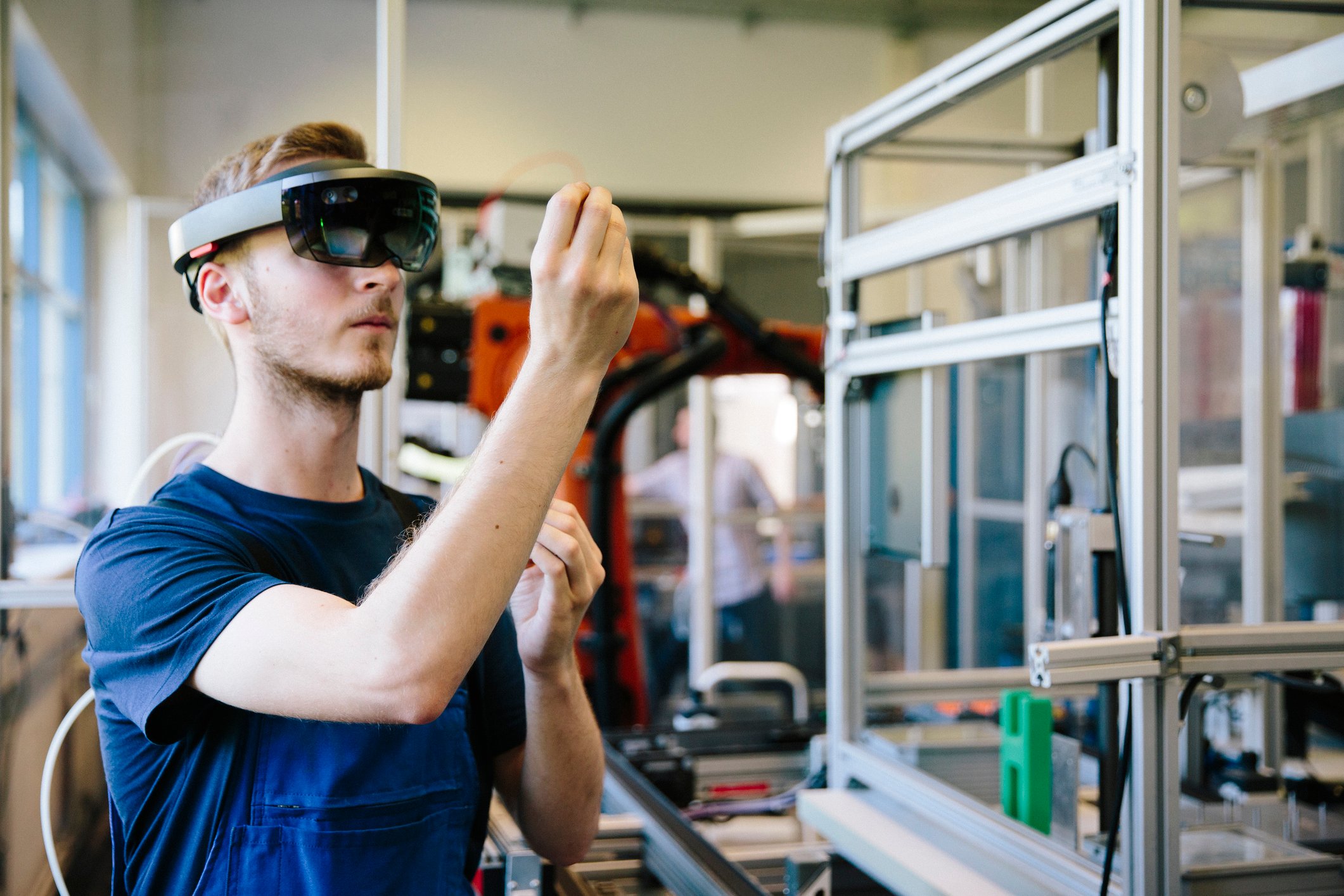
The next evolutionary leap of computer technology won’t happen on the phone in your pocket, nor even on the sleek screen of the smart watch fastened to your wrist. It will happen right before your eyes, in the space all around you.
Smart glasses are wearable computers that transform the outside world into an expansive digital interface. Remember the slender armatures and the curious prismatic lens of Google Glass? That awkward set of futuristic spectacles is one of the earliest modern examples of smart glasses, though the technology has advanced considerably since Glass was released in 2014. Smart glasses have had a rocky start among consumers in recent years, but they have gained renewed interest from companies looking to put them to use in the workplace. Imagine a world where heart surgeons can consult interactive diagrams of the aorta or, closer to home, where construction professionals can saunter through high-resolution 3D models of entire building projects, inspecting virtual elements and tweaking them as they pass.
It may look like some far off frontier, but this world is much closer than what meets the eye.
In this article, thus, we’ll take a deeper look into smart glasses technology and its place in our industry:
- Discussing the differences between augmented reality (AR) and virtual reality (VR), the computer-tech these products use.
- Explaining the uses of smart glasses.
- Explaining the applications smart glasses have in construction.
Smart Glasses Technology: Augmented Reality vs Virtual Reality
When we talk about smart glasses in the context of construction, we’re talking about devices that overwhelmingly rely on something called augmented reality. Augmented reality (AR) and virtual reality (VR) are words that get thrown around a lot these days and while the two terms are similar, it’s important to understand upfront that they are not interchangeable.
Virtual Reality Glasses
Let’s start with virtual reality, the one you’re likely most familiar with. Virtual reality is a comprehensive computer-generated simulation of a three-dimensional space. Think The Matrix or the OASIS in Ernest Cline’s science-fiction novel, Ready Player One. The idea can be traced at least as far back as 1935, when science-fiction author Stanley Weinbaum wrote about a set of VR-like goggles in his short story, “The Pygmalion’s Spectacles.” The technology gradually shifted from fiction to reality, though it had several false starts along the way. It wasn’t until the 2010s that portable models of VR headsets became viable consumer products, primarily in the realm of video games.
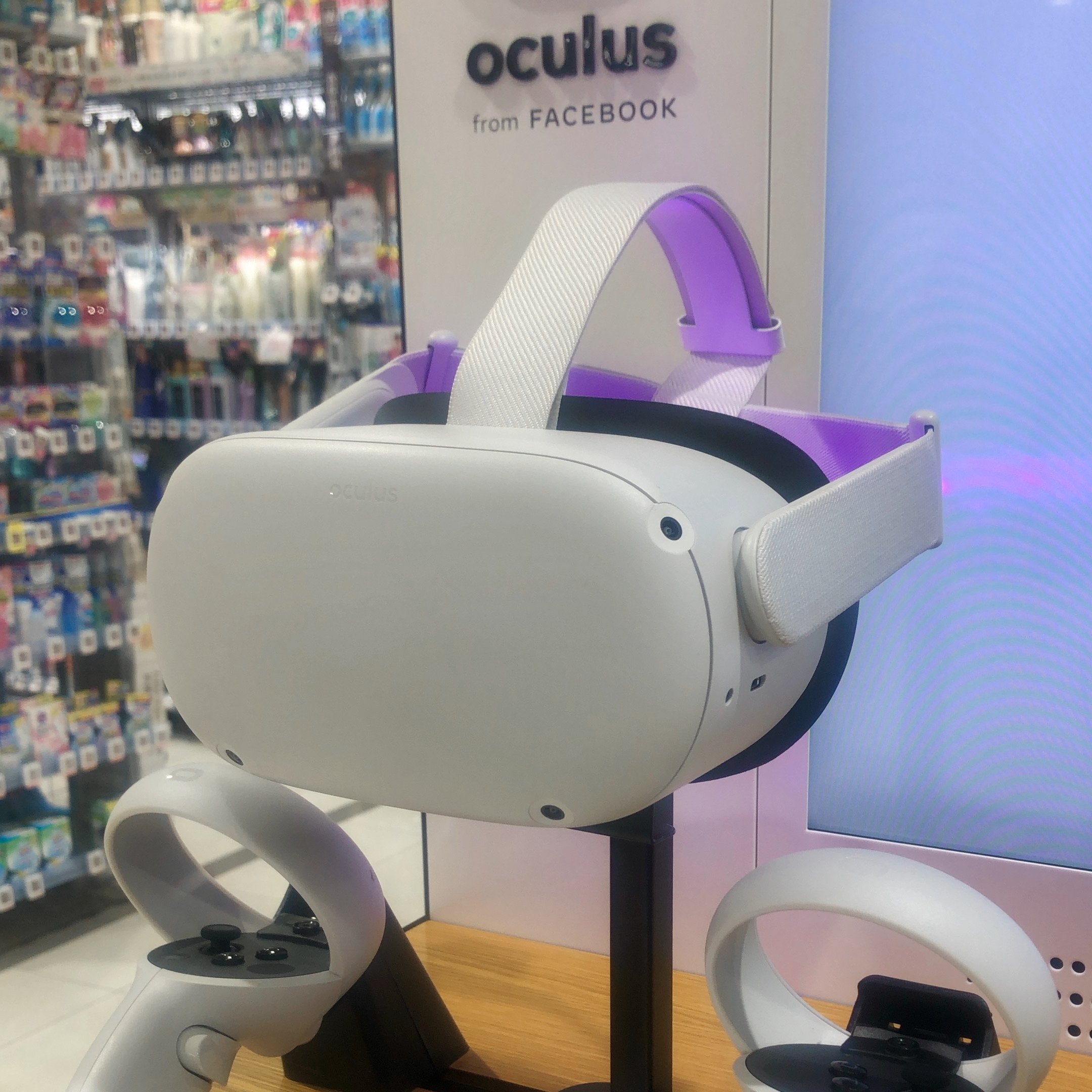
Pictured above: Oculus Quest 2. Image source: Wiki Commons
What are the best VR smart glasses, and how much do they cost? Examples include the Oculus Quest 2, the HTC Vive Pro 2, and the Valve Index. Some can cost thousands of dollars while others that rely on smartphones can be as cheap as $20.
Augmented Reality Glasses
Augmented reality on the other hand involves the superimposition of computer generated visuals onto the real world. Instead of simulating an entire space like VR does, AR blurs the line between the real and the unreal, enhancing or “augmenting” the viewer’s visual perception of the world by stirring interactive three-dimensional graphics and data displays into the mix. A person wearing an AR headset can still see their actual surroundings but they can also see and interact with things that are invisible to others, whether it’s a digital chyron of the news or a hologram of a whale swimming languidly through the room. Dubbed “The Sword of Damocles,” the first AR headset was invented in 1968 by Harvard professor Ivan Sutherland. Coined as a term in 1992, some of the earliest iterations of augmented reality were focused on the visualization of maps and terrain and were mostly limited to the military.
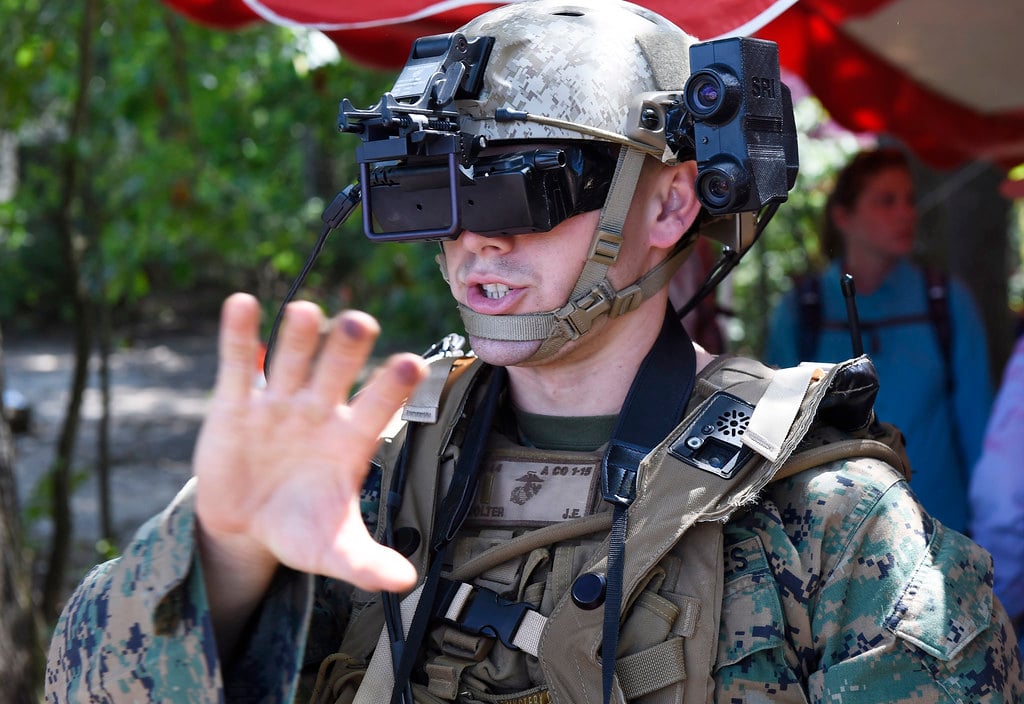
Pictured above: Naval officer with augmented reality glasses equipped with camera. Image source: flickr
The most recognizable example of modern AR is the popular smartphone game Pokémon GO, which saw millions of people chasing virtual Pikachus and Clefairies through real world streets and back alleys.
What are the best AR smart glasses, and how much do they cost cost? Like Pokémon GO, most augmented reality lives as apps on the screens of people’s smart devices, though a handful of promising AR headsets have been created in the years following the decline of Google Glass.
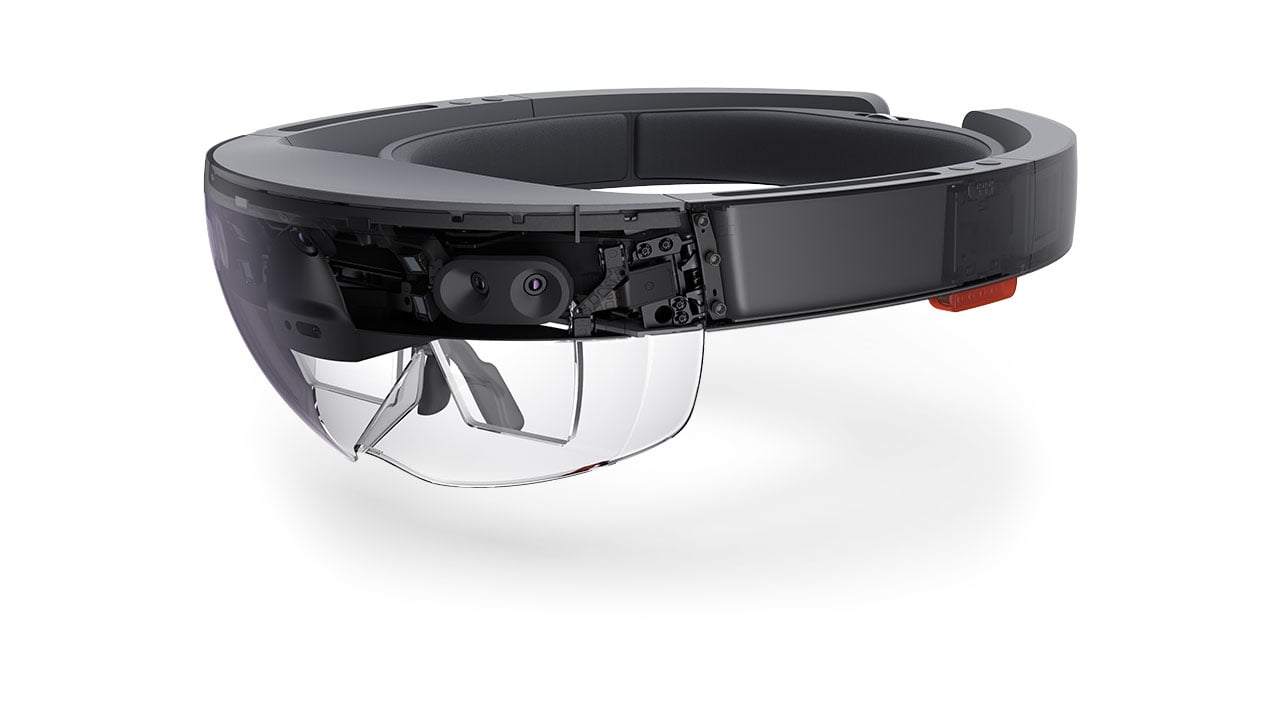
Pictured above: HaloLens, manufactured by Microsoft. Image source: Wiki Commons
These newer models, which are capable of projecting complex digital illusions into the wearer’s field of view, include the Magic Leap and Hololens by Microsoft. HaloLens 2 by Microsoft even has hardhat-integrated version, built in partnership with Trimble, that features noise-cancelling audio output, “purpose-built for personnel in dirty, loud, safety-controlled work site environments." The prices of these later era AR headsets also range from hundreds to thousands of dollars.
Other Features of Smart Glasses
What are smart glasses good for?
Augmented reality is just one of the many useful features that smart glasses pack into their frames.
- Smart Glasses with Camera Creating Real-Time Training Materials: Built-in cameras, microphones, and headphones can record and relay video, images, and audio, providing a strong primary source of documentation that can be livestreamed or reviewed at a later date for quality assurance or other purposes. Viewers of this first-person content can catch a glimpse into what the world looks and sounds like from an individual’s point of view (POV), which can be useful for creating tailored training or instructional content down the line.
- Data Visualization: Another prominent and desirable feature of smart glasses is their ability to display data of any kind in the wearer’s frame of view. Remember, smart glasses are essentially computers attached to a person’s face. This means Bluetooth® and internet connectivity, making smart glasses potentially compatible with other smart devices.

- Multi-Tasking and Improved Productivity: Many smart glasses can also be operated hands-free, either with gestures or voice commands, making it easier for wearers to complete tasks, equipped with data that smart glasses visually display, without having to flip through cumbersome paper documentation and periodicals.
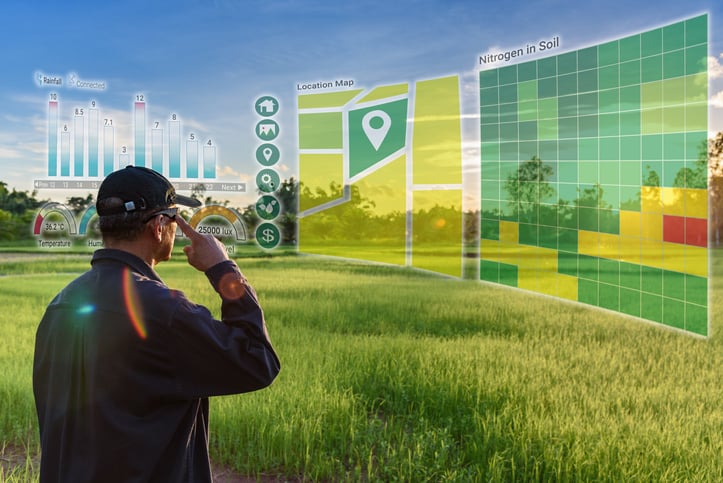
- Eye Tracking Technology can offer insight into what details in the environment attract the most attention and can even replace the cursor of a mouse for selecting items on a digital display. A person fitted with a set of these high-tech specs could explore three-dimensional AR objects, surf the internet, answer phone calls, record their POV, and run any number of onboard apps right before their eyes without even having to lift a finger.
How Can Smart Glasses Be Used in the Construction Industry?
The possible benefits of this technology to the construction industry are limited only by the imagination. Given a sufficiently advanced set of smart glasses, a worker’s performance could become astronomically more efficient and the jobsites they labor on significantly safer.
Some of the ways smart glasses could change construction work for the better:
- Smart glasses linked with construction drones
- Smart glasses and construction safety (smart safety glasses)
- Smart glasses and on-the-job performance
- Smart glasses and training
- Smart glasses and building information modeling (BIM)
- Smart glasses and construction inventory management
Now, let’s dive into each of these the above-mentioned benefits of smart glasses a little deeper.
1. Smart Glasses Linked with Construction Drones
The whirring buzz of construction drones in flight is becoming increasingly common in the industry. There’s good reason for this too, as drones have become indispensable tools for pre-construction mapping, maintaining safe jobsites, tracking assets, and monitoring progress during the building phase.
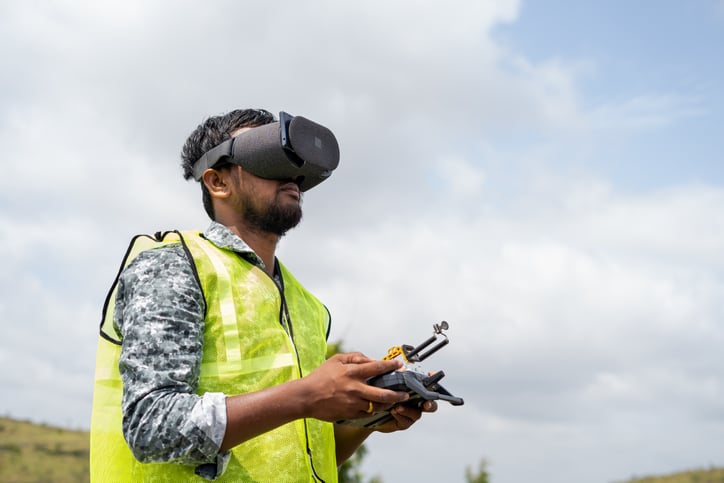
But piloting a drone is not as easy as it looks. For one thing, most states require a license. Setting that aside, drones can crash into things if you’re not careful, potentially resulting in the need for a replacement or even causing a hazard to workers below. Collisions often occur because the seemingly simple act of keeping one eye on the drone’s location in the sky and the other on a separate video screen displaying the drone’s POV can be a challenge for even the sharpest pilot. The addition of smart glasses into the equation makes the need for this dangerous kind of attention splitting a thing of the past.
Smart glasses like the Vuzix Blade or the Epson Moverio BT-300 project a video feed of your drone’s perspective onto a set of transparent lenses, through which you can also maintain a clear line of sight on its flight path. Drones are already reshaping how we approach work at every stage of the construction process. Combining them with smart glasses is the next leap forward, empowering pilots to conduct safer and more accurate flights than ever before.
2. Smart Glasses and Construction Safety (Smart Safety Glasses)
Smart glasses can also protect the health and safety of workers on the ground in a variety of ways. Construction requires a great deal of multi-tasking, from answering incoming phone calls, tracking tools, and referring to project specifications between hands-on activities.
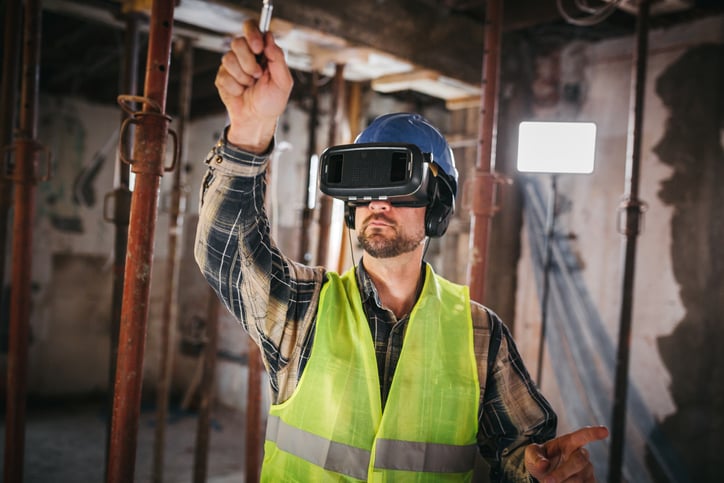
At the same time, construction jobsites are kinetic environments filled with potential hazards and a slip of focus at the wrong moment can have dire consequences. Smart glasses can reduce accidents by consolidating a lot of conflicting activities into a single line-of-sight device. For instance, a worker fitted with smart glasses could safely make a critical schematic check or answer an urgent incoming call without the risk of breaking concentration on the power tool buzzing in their hands. The AR capabilities of smart glasses can also be used to flash warnings of hazardous materials or highlight the locations of other workers in hidden areas where demolition or other types of dangerous work may be about to begin.
3. Smart Glasses and On-the-Job Performance
In video games, the player’s perspective is often bracketed with a heads-up-display populated with vital stats and information like mini-maps and geiger counters that can be taken in with a glance. Smart glasses make the heightened efficiency of a functional HUD a real-world possibility. Everything from the date and time to a checklist of the day’s tasks could be displayed in the corner of a worker’s vision. Much like a desktop, the HUD could provide easy access to the internet and other digital tools. Interactive 3D schematics and blueprints could be superimposed onto real world materials or tasks and react affirmatively when a step has been completed. Meanwhile, onboard cameras could enable the user to zoom in, making it much easier for workers to complete delicate tasks that involve small parts and tools. Smart devices already support augmented reality apps that can take measurements and store them in the cloud. These and other apps could be loaded into smart glasses, potentially enabling inspectors, surveyors, and contractors to quickly capture precise measurements with a flick of their eyes.
4. Smart Glasses and Training
Interactive augmented reality objects can provide safe ways for workers to explore unfamiliar tools and learn new skills on the job.
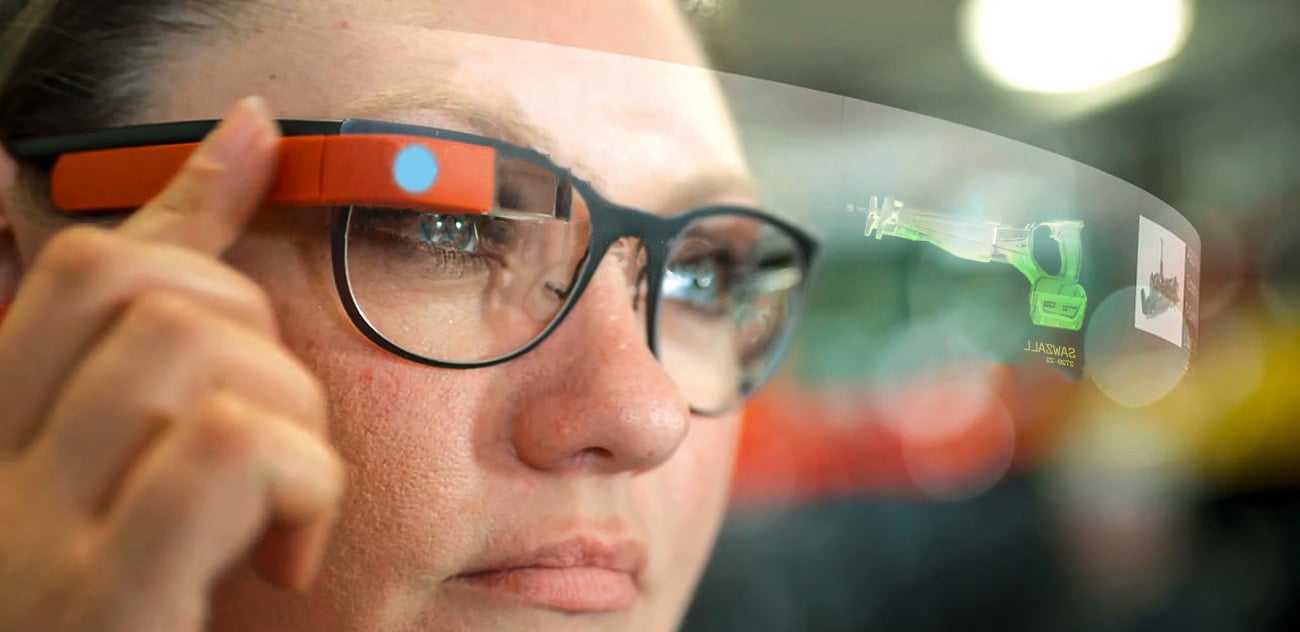
Let’s say you need to train someone how to drive an excavator. Sitting in the cockpit of the machine, a worker wearing a set of smart glasses might be instructed via AR holograms how to turn it on, which set of controls will swivel the chassis or raise and lower the shovel to the ground. Or let’s use a less advanced example: YouTube. The online video platform has grown notorious in recent years for the wide range of instructional videos it hosts, making it easier than ever to learn new skills on the fly, like learning how to use One-Key features for example.
But what if you could watch these videos without having to constantly look back and forth from the task at hand to the screen of your smartphone? Talk about taking a "watch, learn, do" mantra to the next level.
And these are just a couple examples of how smart glasses can open up new ways to learn on the job! Opportunities for increasing construction productivity abound.
5. Smart Glasses and BIM
One of the most exciting possibilities is to combine smart glasses with Building Information Modeling (BIM). BIM in a nutshell is a software facilitated process of rendering interactive 3D models of building projects. With smart glasses, construction professionals can explore life-size versions of these models in the actual spaces they will eventually occupy. As a construction project unfolds, workers can walk through the jobsite and check their progress against the BIM model, examining it for discrepancies and saving time and money by avoiding costly alterations down the line. Designers can flesh out BIM models even further by placing AR objects into the mixed reality world, visualizing how different surfaces, fixtures, or furniture would look in the finished product.

6. Smart Glasses and Construction Inventory Management
It’s worth stating that there are a number of potential applications where an construction inventory manager might work with a construction technologist to pilot the use of augmented reality smart glasses.

Such examples may include:
- optimizing space in the tool room,
- simplifying the picking process through data visualization
- streamlining tool crib management by creating a hands-free stocking process
Just to name a few.
The Future of Smart Glasses
For all the intriguing futuristic vistas they have to offer, smart glasses have had a bit of a rough start. Los Angeles based augmented reality startup DAQRI had developed a hardhat equipped with a sophisticated AR headset in recent years, but the company has since gone out of business. The group behind the promising Magic Leap goggles has had troubles of its own, and Google Glass, the most notorious pair of smart specs, failed to capture the public’s imagination and has since withered on the vine.
The simple reality is that smart glasses technology has yet to be perfected. Some of the devices are clunky, their interfaces laggy, battery lives short, and price points through the roof. The Hololens, one of the most versatile of the devices currently available, costs a whopping $3,500. Its performance, while impressive, also suggests to some product reviewers that the future of AR may be farther away than we think.
That said, there are many smart glasses with a wide variety of different features currently on the market. Complete with an onboard camera, the stylish set of smart specs developed by sunglasses company Rayban are capable of capturing and sharing video on social media. Chinese company Nreal also has developed a $600 pair of smart glasses that would let the wearer watch their favorite shows and movies on video streaming services. Will these and other examples catch on where Google Glass failed? It remains to be seen.
One of the main reasons behind Google Glass’ downfall is that people didn’t like being around them. The social discomfort and irritation felt by those in the presence of someone wearing a set of the strange nose pinching specs heralded the invention of a new term: “glasshole”.
Here’s how urban dictionary defines it:
A person who wears Google Glass and refuses to remove it when directly interacting with other people, private gatherings, or public events. The general belief is that these people are photographing, recording, Googling, and Facebooking the people they're interacting with instead of focusing on the conversation or acting like a human being.
This is why some manufacturers like Microsoft, Epson, and Vuzix have taken the lesson of Google Glass to heart and have shifted their gaze from consumers to enterprise. These companies are betting on the premise that people will be more willing to embrace smart glasses if they are applied only to limited contexts. People at a party for instance might understandably balk at the idea of their drunken revelries being recorded on the sly by a random stranger wearing a pair of smart specs fitted with micro cameras. On the other hand, those same people would probably be more accepting of the same technology during a trip to the doctor’s office, where the cameras, augmented reality, and heads-up-display of their physician’s smart glasses are used as an aide to dramatically improve their treatment.
For some, a world flooded with ghostly text and holograms is a frightening place to imagine. Reality is frenetic and anxiety inducing enough without our every waking moment being overtaken by a commodified augmented reality landscape. One way to dodge this outcome while still retaining the benefits that smart glasses have to offer is to transition the technology from a consumer product to a tool of industry.
At the end of the day, the future of smart glasses is unclear. The possibilities are exciting, like how construction robots may one day help a talent-strapped industry be more productive despite having smaller teams.
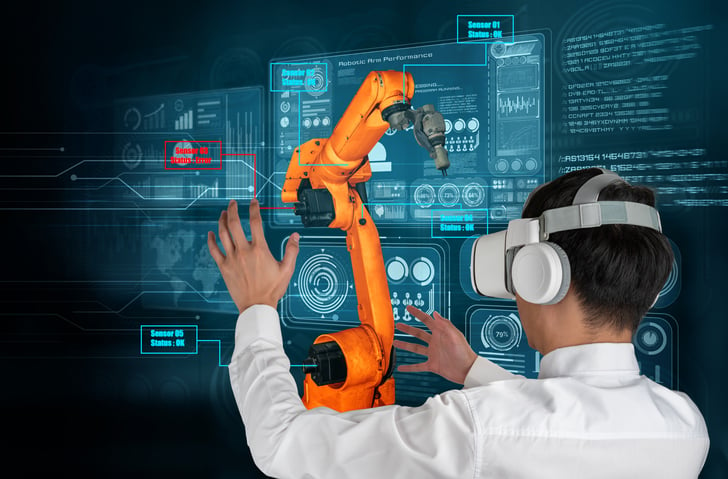
For now, we must wait and watch closely to see what leaps into view.